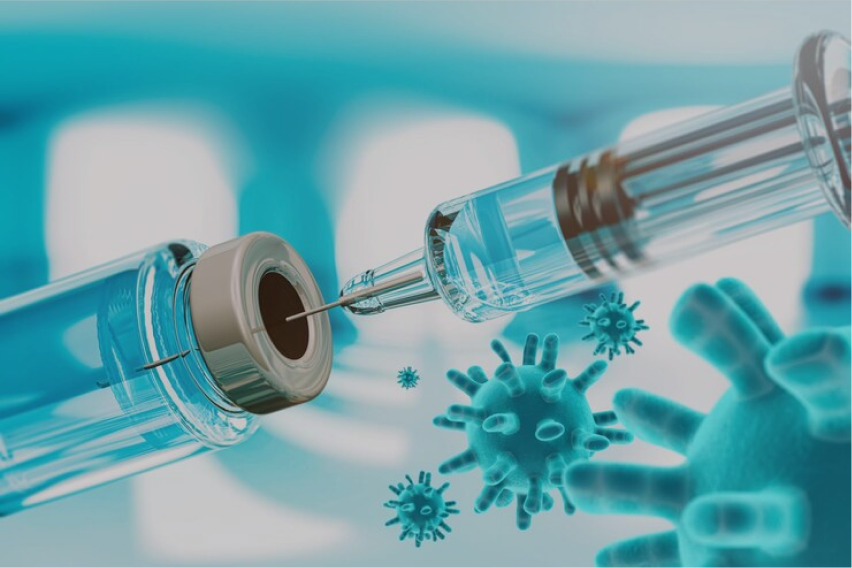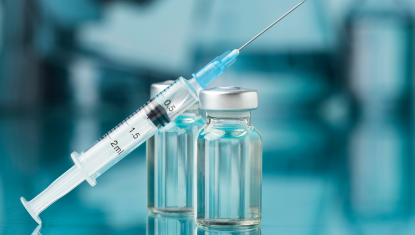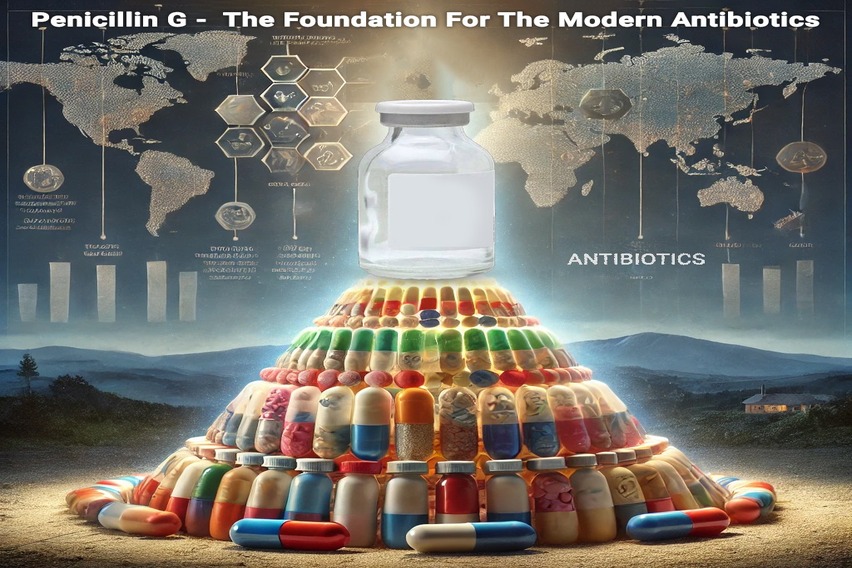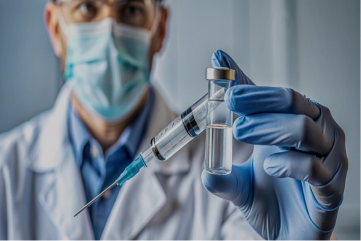Antimircobial Resistance is one of the top 10 threats for global health

Antimircobial Resistance is one of the top 10 threats for global health
But first let’s understand what is Antimicrobial Resistance (AMR)?
AMR usually occurs when bacteria, viruses, fungi and parasites no longer respond to antimicrobial medicines. It is a natural process that happens over time through
genetic changes in pathogens. It’s spread is accelerated by human activity, misuse and overuse of antimicrobials in humans, animals and plants.
The antibiotics and other antimicrobial medicines become ineffective and infections become difficult to treat which further increases the risk of disease spreading, severe illness, disability and death. In 2022 Global Antimicrobial Resistance and Use
Surveillance System (GLASS) report increases the concern as it reported resistance rates in 76 countries of 42% for third generation cephalosporin-resistant E.coli and 35% for methicillin- resistance Staphylococcus aureus.
A few key factors contributing to AMR are :
- Overuse of Antibiotics
Overprescribing antibiotics in both human and animals along with using antibiotics when not required for certain basic illness leads to AMR.
2. Agricultural Practices
The resistant bacteria tends to spread in humans through food as well. The reason for this is the use of antibiotics in livestock to promote growth and prevent
disease in crowded conditions which leads to emergence of resistant bacteria.
3. Improper Use of Medications
A lot of times the course of prescribed antibiotics is incomplete or use of leftover medications can also contribute to the survival of the resistant bacteria.
4. Poor Infection Control
Irregular and inadequate hygiene and infection control practices in healthcare environment can also lead to spread of resistant bavteria
5. Global Travel
The ease of travelling can also quickly spread the resistant bacteria across the borders and countries.
Talking about the global concern, AMR is a problem for all countries at all income levels. The factors that contribute in AMR include:
- Lack of access to clean water
- Sanitation
- Hygiene for both humans and animals
- Poor infection and disease prevention and control on homes, healthcare facilities and farms
- Poor access to quality and affordable vaccines, diagnostics and medicines
- Lack of awareness and knowledge
- Lack of enforcement of relevant legislation
People living in a low resource area or country with vulnerable population is impacted the most by both the drivers and consequences of AMR
What would be the impact of AMR globally?
Increased Mortality
It is estimated that AMR has caused 1.27 million global deaths in 2019 and also had its contribution in 4.95 million deaths. Further, WHO estimates 10 million deaths annually by 2050 if left untreated.
Impact on Economy
Treating such resistant infections is very expensive as it requires intense care and longer stay at the hospitals. The World Bank estimates that AMR could result in
US$ 1 trillion additional healthcare costs by 2050, and US$ 1 trillion to US$ 3.4 trillion gross domestic product (GDP) losses per year by 2030
Impacts the Treatments
A lot of treatments or procedures like surgeries, chemotherapies and transplants rely on antibiotics to prevent infection. AMR can cause hinderance in the success of
these treatments or procedures.
Global actions required to address AMR
One Health Approach
As humans, animals and ecosystem are closely linked and inter-dependent, we need an integrated, unifying approach that aims to achieve optimal and
sustainable health outcomes. This approach brings together the stakeholders and companies from different sectors to work together in the design, implementation and monitoring of programmes, policies, legislation and research to attain better health and economic outcomes.
Global Action Plan (GAP)
A lot of countries adopted the Global Action Plan (GAP) during 2015 World Health Assembly to implement the multisectoral national action plan with One Health approach. The GAP was supported by Food and Agriculture Organisation of the United Nations (FAO), Worl Organisation for Animal Health (WOAH) and United
Nations Environment Program.
World AMR Awareness Week (WAAW)
WAAW is a global campaign to raise awareness, understanding and best practices with the public, One Health stakeholders and other policymakers. WAAW is celebrated from 18th to 24th November every year.
Let’s understand the Science behind Antimicrobial Resistance
Genetic Mutations
The bacteria acquire mutations or antibiotic resistance genes from other bacteria, enabling them and their progeny to resist antibiotics. This resistance allows bacterial populations to grow at antibiotic concentrations at least four times higher than the minimum inhibitory concentration (MIC), the lowest concentration preventing visible growth.
Horizontal Gene Transfer (HGT)
The bacteria acquire genetic material, including antibiotic resistance genes, from other bacteria rather than inheriting them from parent organisms. This transfer can occur through mechanisms such as transformation (uptake of free DNA),
transduction (transfer by bacteriophages), and conjugation (direct transfer via cell- to-cell contact). HGT allows bacteria to rapidly spread antibiotic resistance across different species and strains
Efflux Pumps
Efflux pumps are proteins found in the cell membranes of bacteria that actively expel antibiotics and other toxic substances out of the cell. By reducing the
intracellular concentration of antibiotics, efflux pumps help bacteria survive and
grow even in the presence of antimicrobial agents. These pumps can contribute to multidrug resistance as they can expel a wide range of antibiotics, making infections harder to treat.
Enzymatic Degradation
It is a mechanism of antibiotic resistance where bacteria produce enzymes that
chemically break down and inactivate antibiotics. This prevents the antibiotics from reaching their targets or reduces their effectiveness. Common examples include beta-lactamases, which degrade beta-lactam antibiotics like penicillin and cephalosporins, rendering them ineffective. This mechanism allows bacteria to
survive and proliferate even in the presence of these antibiotics.
Biofilm Formation
Biofilm formation occurs when bacteria adhere to surfaces and produce a
protective matrix, making them more resistant to antibiotics and the immune system.
This barrier helps bacteria survive and exchange resistance genes, leading to chronic infections
Next Generation Approach to Tackle Antimicrobial Resistance
As the clock ticks, there is a requirement for a newer, efficient and durable
approach to tackle AMR. Currently a lot of people are working on various aspects to tackle AMR. A few are listed below :
Phage Theraphy
This involves using bacteriophages, viruses that infect and kill specific bacteria, as an alternative to antibiotics. Phage therapy can be tailored to target resistant bacteria without affecting the beneficial microbiota
Antimicrobial Peptides (AMPs)
AMPs are short proteins that can kill bacteria by disrupting their cell membranes. They offer a promising alternative to conventional antibiotics due to their unique mechanisms of action.
CRISPR-Cas Systems
It is a technology being explored as a tool to specifically target and eliminate antibiotic resistance genes in bacterial populations
Synthetic Biology
This field involves engineering microorganisms to produce novel antibiotics or to enhance existing antibiotics' effectiveness. Synthetic biology can also be used to create diagnostic tools that quickly identify resistant infections
Personal Responsibility in Tackling Antimicrobial Resistance
AMR is not just a problem for scientists, healthcare professionals and policymakers, it’s a global threat. It effects every individual and one should put in efforts to tackle AMR by choosing and adapting responsible behaviours like :
- Responsible use of Antibiotics
- Practice good Hygiene
- Regular vaccination
- Responsible Pet and Livestock Care
- Environment Consideration
- Advocating for Change
Role of Penicillin and Cephalosporin Manufacturers in tackling AMR
Even Penicillin and Cephalosporin manufacturers play a crucial role in tackling AMR.
- High Quality Production
- Research and Development
- Antibiotic Stewardship
- Surveillance and Monitoring
- Education Awareness Campaigns
- Sustainable Practices
Conclusion
To conclude, AMR is a multifaceted challenge that threatens global health, economic stability and modern medicine. It requires a concerted effort from
healthcare providers, researchers, policymakers, companies, and the public to address this growing threat effectively. Every responsible choice contributes to preserving the effectiveness of antibiotics, ensuring they remain powerful tools in combating infections for generations to come. By investing in research and development, ensuring high-quality production, promoting responsible use,
collaborating on a global scale, and supporting robust surveillance systems, pharmaceutical companies can help mitigate the impact of AMR.
Collective effort is the key to tackling AMR.



